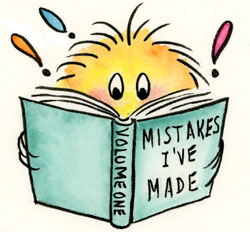
FoundRead: Can social media actually do anything for your company’s image or to sell your product – especially when you’re, let’s say, running a start-up with no marketing or PR budget? I was in just that position not too long along ago, and I can tell you the answer is absolutely ‘Yes.’ So how can you leverage social media to achieve your goals?
Be real.
I’ve seen it time and time again; executives start blogging because it’s trendy. Blogs are not a “if you build it they will come” proposition. If you’re going to blog, take the time to think about the unique insight you can bring to the market. What jobs have you held in the past that bring bearing on your viewpoint today? What companies have you worked for? Who are you hanging out with in the community that surrounds your business? What broader issues surround the company or project you are trying to get off the ground? Start out picking a few key themes and watch how they are discussed within blogs and mainstream media, then write up your reactions. Don’t be afraid to be bold – there is nothing worse than a milquetoast corporate blog.
Watch and learn
Figure out who already has mastered the art of blogging. You probably already know who they are. What are their secrets to success? How often do they blog? How are their blogs organized? Who do they go to for information? What’s their writing style? Most of all, don’t over think what is already working for folks you respect. In social media, simple is good!
Assess your network.
As an entrepreneur or a founder, your own network might hold the influential spark than can start a fire. Vet your ideas and thoughts with this group. What parties or events do they regular attend that attract other influential people you want to meet? Our CEO Rob Crumpler was introduced to me this way. Ditto for many others on the BuzzLogic team.
Share the love.
Bloggers love it when someone demonstrates they’ve read their blog by linking back. Similarly, comment on relevant posts of bloggers you admire – or those who are influential on the topics you care about. Trackback other bloggers within your post and reference or compliment whatever point was made. Start a blogroll and feature all of the bloggers you follow.
Keep an eye on the conversation.
As important as getting involved is, monitoring the blogosphere for what people are saying about you is just as important. Buzz, both good and bad, now moves faster than ever and you need to be plugged into it to maintain visibility and be effective at adding value with solid content. Because at the end of the day, an informed opinion, unique insight and compelling content are what it’s all about.
Author: Pamela Swift
Brand Check
Small Business Branding: Consumers are exposed to over 3,000 marketing messages a day. TV spots, radio ads, billboards, logos on t-shirts, packaging labels, coupons in the mail, pop up ads on the internet, kids selling cookies at the door – they are everywhere.
And yet you think the consumers you want to talk to are going to filter through over 3,000 messages a day – just to find yours. And because this task alone is not daunting enough, most businesses decide to make it harder by hiding their messages. If you are not consistent in ALL your marketing materials, you are wasting thousands of dollars and losing potential customers every day.
Here are some questions you should ask yourself to check your brand’s consistency.
– Are you using just one logo? Is it always in the same color?
– Are you consistent with paper stock – color, texture and weight?
– Is the tone of all your communications pieces the same – is it in one voice?
– Does that one voice match the personality and soul of your company?
– Do your sales, recruiting, internal documents, and other communications match your marketing materials?
– Do your ads reflect the same look, feel and voice?
– When you do your radio/TV ads – do you use the same talent for the voice of your company? Is he/she also on your answering system?
Do a Quick Brand Check [Small Business Branding]
6 Mistakes of Raising Funds
 Entrepreneur: Many financing efforts fail because of avoidable mistakes that are made in pitching potential lenders, structuring the agreement or managing the money once the deal is done.
Entrepreneur: Many financing efforts fail because of avoidable mistakes that are made in pitching potential lenders, structuring the agreement or managing the money once the deal is done.
Steering clear of these missteps can increase your chances of success, both in obtaining startup funds and keeping the money flowing. Be sure to avoid these blunders:
Half-baked business plans
There’s nothing worse than going into a money meeting unprepared. If you haven’t put the time and energy into writing a full-blown business plan complete with elements, such as a cogent business description, financial projections and a competitive market analysis, the people with the cash won’t put the time into evaluating your proposal.
Focusing too much on the idea and too little on the management
It’s not enough to convince potential backers that you’ve invented the next must-have gadget or can’t-miss clothing store concept. You also need a team that can generate the revenues to repay a bank loan or provide an exit strategy for a VC or angel investor. Many business novices ignore the second part of the equation; that can doom their money quest. Showing that you have recruited a top-notch salesperson, a skilled marketer, an accountant with startup experience, other key personnel, and even outside experts like an attorney or business coach who can supply professional guidance is essential to finding a funding source.
Not asking for enough money
In a 2004 U.S. Bank study of reasons for small business failures, 79 percent cited “starting out with too little money” as one of the causes of their collapse. That’s often because entrepreneurs who are wet behind the ears don’t realize that they should calculate their borrowing needs based on their worst-case scenario instead of their best-case forecast. If you’re underfunded, you won’t have a cushion to tide you over in the event of slow initial sales or unexpected market conditions.
Having too many lenders or investors
One of the hazards of securing financing from multiple sources is managing too many relationships and expectations. It takes time away from your core business. These not-so-silent partners may have conflicting interests or demands and the consequences can be devastating. This is particularly true when you raise money from friends and family.
Failing to get the proper legal agreements
This is arguably more important than a prenuptial agreement for a couple with significant individual assets. Every lender or investor eventually will need his money back, and a legal document covering everything from the terms to the timing can avoid the kind of acrimony just described.
Poor cash flow management
Too many new business owners burn through their seed money too quickly and fail to reach cash flow-positive status in a timely manner. Some causal factors, such as late product deliveries and economic downturns may be beyond one’s control, but the executive team is clearly at fault for others, such as unnecessary spending and overly optimistic expense/income forecasts. Financial sponsors don’t take kindly to that sort of mismanagement. And if they turn off the tap, all of your hard work may go down the drain.
The 6 Biggest Mistakes in Raising Startup Capital [Entrepreneur]
Entrepreneur Profile: Jonathan Hall

NYTimes.com: Remember when white earbuds had status? Jonathan Hall does. But these days, as he and his fellow rail commuters in the tristate area know, the iPod’s once-cutting-edge headphones confer as much distinction as a gray-flannel suit. A couple of years ago, Hall and his wife, Kate, decided that there must be a way to capitalize on this shift. IPod add-ons, including cases and “skins,” had become big business by then — but those items decorated only the main device, which was usually stuffed in a pocket, out of sight. Today, the Halls, who are both 29, have sold tens of thousands of pairs of flexible rubber charms called Emotibuds, which clip onto earbuds, almost like earrings. Each pair (they sell for $12 for a set of three pairs) features a blocky little face that incorporates an emoticon into a cute cartoon visage. There are a variety of faces, each set against a bright color and corresponding with a mood, like “starry-eyed” or “frisky.” Recently, Emotibuds were part of the online design store FredFlare.com’s Next Big Thing contest, and while they didn’t win, the store has had to reorder them at least four times to meet demand.
Earphone Identity [NYTimes.com]
YoungEntrepreneur.com
![]()
There are many business blogs dedicated to small business and entrepreneurship on the Internet today. The bloggers put in a lot of effort on their blogs, sharing helpful small business content and resources for the many aspiring entrepreneurs out there. The road to your own start-up is full of uncertainties and unknowns, and as such it’s always great to learn from the entrepreneurs who share their guidance with their useful advice and comments on their business blogs. Likewise, here at GetEntrepreneurial.com we’re always learning from and aspiring to reach the same levels as entrepreneurs like Anita Campbell, Yaro Starak, Adnan, and many others.
Evan Carmichael is no exception. His YoungEntrepreneur.com blog is another fantastic resource for all of us young, aspiring entrepreneurs around the world. Filled with entrepreneurial advice, business growth strategies, startup experience and marketing tips, YoungEntrepreneur.com is an useful resource which we watch very carefully on our blogroll. We particularly like the entrepreneurial advice which he shares based on his own experience, such as delegating tasks in your startup:
If you want to build a company of any substantial size you need to learn how to delegate. It can be a difficult process for many entrepreneurs because it means they are giving up some degree of control but you can only do all the jobs in the business for so long. Here is my advice on how you can successfully delegate some of your work.
There are many other interesting insights and useful articles on the YoungEntrepreneur.com blog, and it’ll continue to be a great resource for us to depend on.